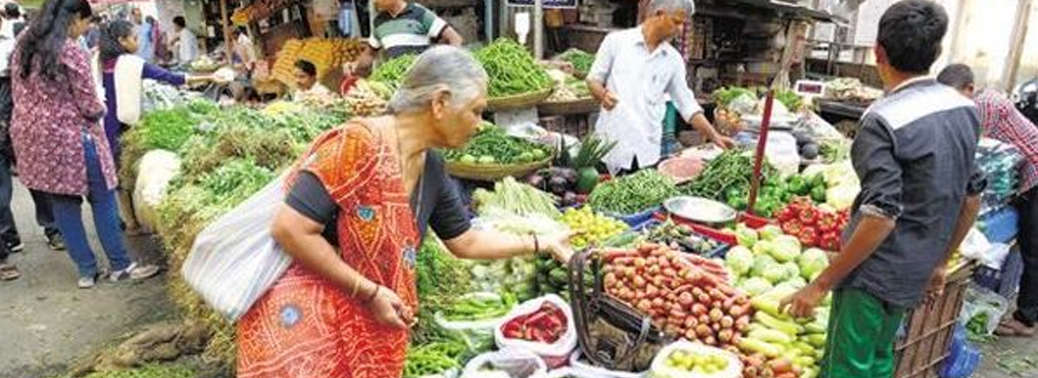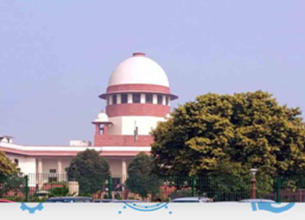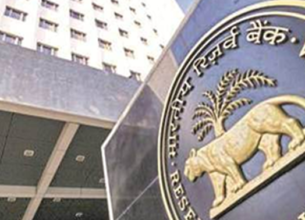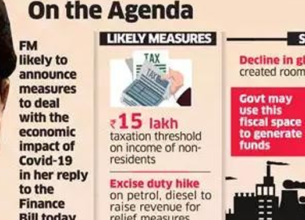DOES INDIA UNDERGOES STAGFLATION?
19, Dec 2019

Prelims level : Economy- Inflation
Mains level : GS-III Indian Economy and Issues Relating to Planning, Mobilization of Resources, Growth, Development and Employment.
Why in News?
- The recent deceleration in the economic growth and sharply rising inflation, there is a growing murmur about India facing stagflation.
What is Stagflation?
- Simply put, Stagflation is a portmanteau of stagnant growth and rising inflation.
- Typically, inflation rises when the economy is growing fast. That’s because people are earning more and more money and are capable of paying higher prices for the same quantity of goods. When the economy stalls, inflation tends to dip as well – again because there is less money now chasing the same quantity of goods.
- Stagflation is said to happen when an economy faces stagnant growth as well as persistently high inflation. In other words, the worst of both worlds. That’s because with stalled economic growth, unemployment tends to rise and existing incomes do not rise fast enough and yet, people have to contend with rising inflation. So people find themselves pressurised from both sides as their purchasing power is reduced.
Why is everyone asking about Stagflation in India?
1. Deceleration in Growth:
- Over the past six quarters, economic growth in India has decelerated with every quarter. In the second quarter (July to September), for which the latest data is available, the GDP grew by just 4.5%.
- In the coming quarter (October to December), too, GDP growth is likely to stay at roughly the same level. For the full financial year, the GDP growth rate is expected to average around 5% – a six-year low.
2. Rise in Inflation:
- Yet, in October and November, retail inflation has soared. In fact, the October inflation was a 16-month high and the November inflation, at 5.54%, is at a three-year high.
- Inflation for the rest of the financial year is expected to stay above the RBI’s comfort level of 4%.
- So, with growth decelerating every quarter and now inflation rising up every month, there are growing murmurs of stagflation.
Is India really faces Stagflation?
- Although it appears so at the first glance, India is not yet facing stagflation. The three broad reasons behind it are:
- One, although it is true that we are not growing as fast as we have in the past or as fast as we could, India is still growing at 5% and is expected to grow faster in the coming years. India’s growth hasn’t yet stalled and declined; in other words, year on year, our GDP has grown in absolute number, not declined.
- Two, it is true that retail inflation has been quite high in the past few months, yet the reason for this spike is temporary because it has been caused by a spurt in agricultural commodities after some unseasonal rains. With better food management, food inflation is expected to come down. The core inflation – that is inflation without taking into account food and fuel – is still benign.
- Lastly, retail inflation has been well within the RBI’s target level of 4% for most of the year. A sudden spike of a few months, which is likely to flatten out in the next few months, it is still early days before one claims that India has stagflation.
Structural reforms to overcome the slowdown:
- Various Suggestions to overcome the existing slowdown, as per G20s Structural Reform Agenda are as:
- 1. Advancing Labour Market Reforms, Educational Attainment and skills:
- Fixed term contracts are expected to liberalise labour markets.
- Certain States such as Rajasthan have liberalized labour markets regulations.
- Reforms in the apprentice acts.
- Central Government has come up with 4 draft legislations for comprehensive reforms in the labour sector. Focus should be also on skill development and industrial partnership for skilling of population.
- 2. Promoting trade and investment openness:
- a. Focus on improvement of logistics sector
- b. Reforms of the customs procedure and Trade Facilitation.
- c. RCEP not signed by India and growing protection across the globe has shown that more needs to be done on this front.
- 3. Encouraging Innovation:
- a. India’s ranking has improved on the Global Innovation Index.
- b. Patent fillings in India has increased but not comparable to similar economies such as China, South Korea.
- c. Patent filing procedure eased.
- d. Focus on start-ups and Innovative Firms.
- India needs to increase R&D expenditure as a percentage of GDP.
- 4. Promoting Fiscal Reform:
- a. FRBM legislation has led to intergeneration equity. However, targets are not followed strictly.
- b. State governments have abided to FRBM targets.
- c. Removal of plan and non-plan classification of budget expenditure led to better results.
- d. Outcome: Output framework to make budget expenditure more Outcome Centric.
- Targets under the FRBM law should be strictly followed. Impact analysis of expenditures incurred should be improved.
- 5. Promoting Competition and an Enabling Environment:
- a. Privatisation of Air India, Bharat Petroleum etc.
- b. Strategic disinvestment of PSUs.
- c. FDI reforms for liberalization of entry of foreign firms into the country.
- d. Competition Commission of India has improved the competitive landscape in India.
- Enhanced competition can be introduced by further boosting FDI in the country. Domestic firms can be made more competitive by dismantling the loss making PSUs. Opening up of restricted sectors such as coal, railways, oil marketing, electricity distribution etc.
- 6. Improving Infrastructure
- a. Proposal to spend 1 Trillion dollar on the infrastructure in this budget.
- b. Focus on highway development: Bharatmala scheme, removal of blind spot, transition to Fastag, Transition to electric mobility planned.
- c. Investment in Railway sector: Dedicated Freight Corridor, High-speed Rail Networks.
- d.Sagarmala Scheme to boost the port sector.
- India has made good improvement in its infrastructure. However, more needs to be done as India is still a infrastructure deficit country. Focus should be on early completion of projects and availability of finance for ease terms for infrastructure.
- 7. Strengthening the Financial System:
- a. Capitalisation of Public Sector Banks
- b. Relaxation of banking licenses- licenses to payment banks, Small Finance banks.
- c. Insolvency and Bankruptcy code altered the creditor and debtor relations.
- d. FRBM caps on government spending
- e. Inflation targeting in monetary policy led to curbing inflation in the economy in a sustainable way.
- f. GST reforms led to widespread reforms in the indirect tax regime and led to economic integration of the country.
- Suggestions of the NK Singh Committee should be followed. FRBM legislation should be strictly enforced.
- 8. Enhancing Environmental Sustainability:
- a. EIA and forest clearance
- b. Increasing pollution in the urban areas, Threat of climate change.
- c. Loss of Biodiversity
- India is a signatory to Paris Climate Deal where India has committed to increasing share of renewable energy sources in the overall energy mix, intensification of forests, and reducing overall the carbon intensity of the economy.
- Targets under the Paris Climate deal and Sustainable development goals should be followed. Strict enforcement of EIA and forest clearance.
- 9. Governance Reforms
- a. Reforms of the civil service to make them more responsive, sensitive
- b. Making citizens more empowered by RTI act, Lokpal Act, Citizen charter etc.
- c. Corruption: Reforms in the Benami Property Act, Fugitive Economic Offenders Act, Prevention of Corruption act.
- d. Empowerment of local governments.
- This is the mother of all structural reform required in the economy which is expected to have most lasting impact. The suggestions of various committees such as ARC II, Punchii Commission etc should be followed. Necessity of political will.
















